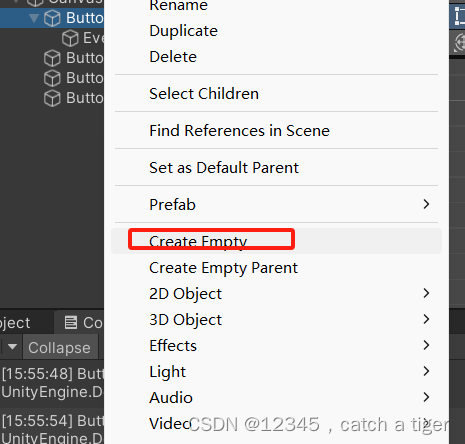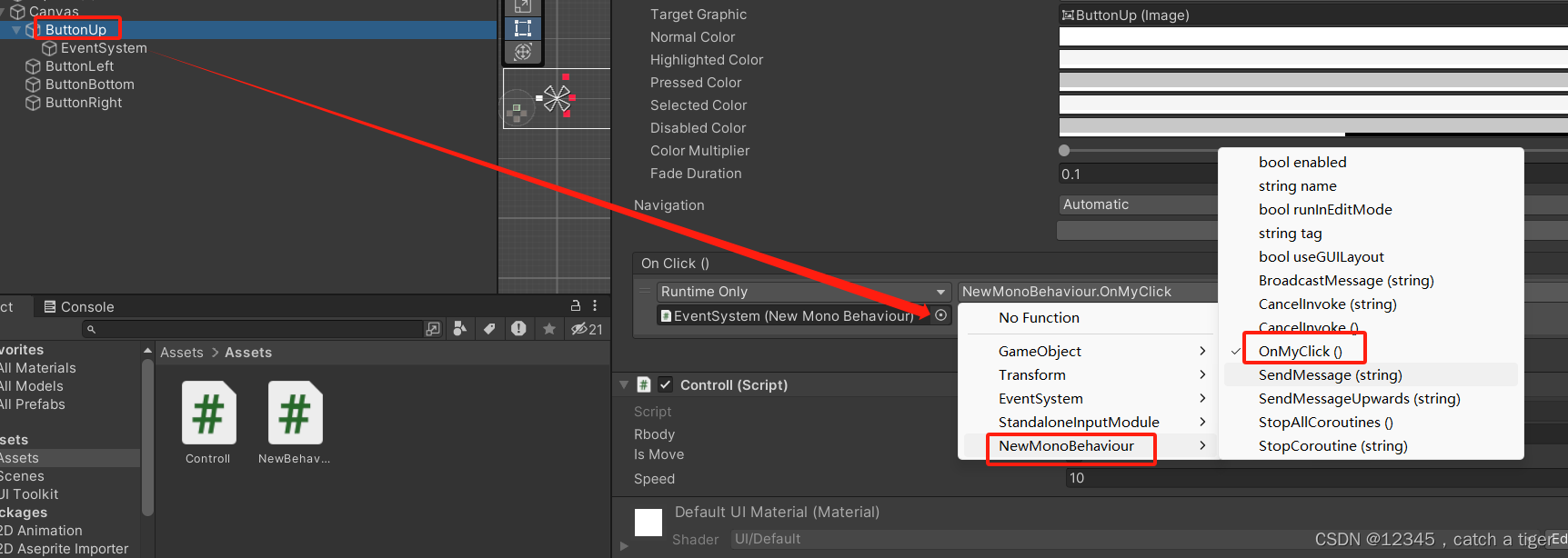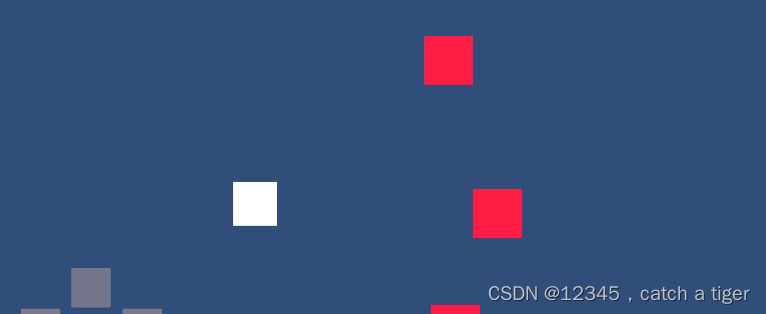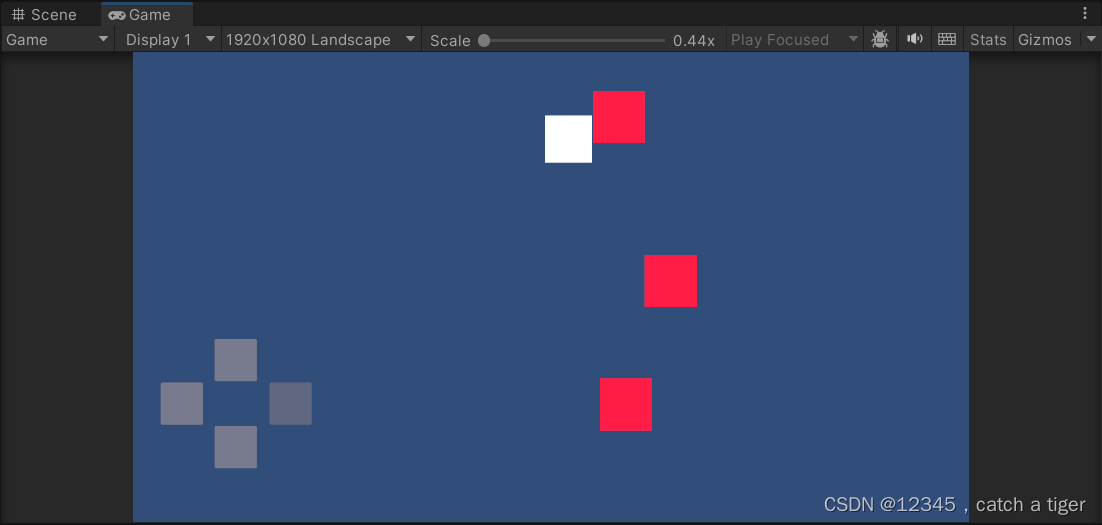Clic de un botón
1.1 Nueva interfaz de usuario -> Botón

1.2 Haga clic derecho en el botón para agregar un objeto vacío

1.3 Crear un script y montarlo en el objeto vacío

Agregue un método de clic al contenido del script para controlar la visualización y ocultación de objetos.
using System.Collections;
using System.Collections.Generic;
using Unity.VisualScripting;
using UnityEngine;
using UnityEngine.EventSystems;
public class NewMonoBehaviour : MonoBehaviour
{
public GameObject player;//获取物体
private bool isActivity = true;
private void Awake()
{
player = GameObject.Find("Player");
}
// Start is called before the first frame update
void Start()
{
}
void Update()
{
}
// 按钮点击事件
public void OnMyClick()
{
isActivity = !isActivity;
//显示或者隐藏
player.SetActive(isActivity);
}
}1.4 Asocie la posición Al hacer clic en el botón con un objeto vacío y seleccione el método de script OnMyClick() del objeto vacío.

1.5 Después de ejecutar, es posible controlar la visualización y ocultación de objetos.


Dos teclas de dirección controlan el movimiento.
2.1 Agregar cuatro botones de dirección

2.2 Agregar un script y montarlo en cuatro botones al mismo tiempo

2.3 Escriba un script para determinar en qué botón se hizo clic según el nombre del botón, a fin de determinar en qué dirección moverse.
using System.Collections;
using System.Collections.Generic;
using Unity.VisualScripting;
using UnityEngine;
using UnityEngine.EventSystems;
public class Controll : MonoBehaviour,IPointerDownHandler, IPointerUpHandler
{
public Rigidbody2D rbody;//获取刚体
private void Awake()
{
rbody = GameObject.Find("Player").GetComponent<Rigidbody2D>();
}
void Start()
{
}
// Update is called once per frame
void Update()
{
if (isMove) {
move();
}
}
public bool isMove = false;//是否移动
public void OnPointerDown(PointerEventData eventData)
{
isMove = true;
getButton(eventData);
}
public void OnPointerUp(PointerEventData eventData)
{
isMove = false;
}
//获取点击的哪个按钮,方向
private void getButton(PointerEventData eventData) {
GameObject gameObject = eventData.selectedObject;
Debug.Log(gameObject.name);
switch (gameObject.name) {
case "ButtonUp":
moveX = 0;
moveY = 1;
break;
case "ButtonLeft":
moveX = -1;
moveY = 0;
break;
case "ButtonBottom":
moveX = 0;
moveY = -1;
break;
case "ButtonRight":
moveX = 1;
moveY = 0;
break;
default:
moveX = 0;
moveY = 0;
break;
}
}
/**
* 移动
**/
public float speed = 10f;//移动速度
private int moveX;//方向 -1左 1右
private int moveY;//方向 -1上 1下
public void move() {
Vector2 position = rbody.position;
position.x += moveX * speed * Time.deltaTime;
position.y += moveY * speed * Time.deltaTime;
//transform.position = position;
rbody.MovePosition(position);
}
}
2.4 Cuando corres, puedes ver que los objetos se pueden mover hacia arriba, abajo, izquierda y derecha.

2.5 Resumen:
- El script implementa la interfaz MonoBehaviour, IPointerDownHandler e IPointerUpHandler para generar el evento de prensa.
- Obtenga el objeto a través de GameObject.Find("Player").GetComponent<Rigidbody2D>()
- Agregue la variable si se debe mover isMove y determine si se debe interceptar el movimiento en el método Actualizar.
- Cuando se presiona OnPointerDown, use eventData.selectedObject para obtener en qué botón se hizo clic para determinar las direcciones arriba, abajo, izquierda y derecha.
- Agregue juicio de dirección, asigne valor cuando se presiona el botón, int moveX; // Dirección - 1 izquierda 1 derecha int moveY; // Dirección - 1 arriba 1 abajo
- Cuando se levanta el botón OnPointerUp, ivMove se vuelve falso y la posición del movimiento ya no se actualiza.